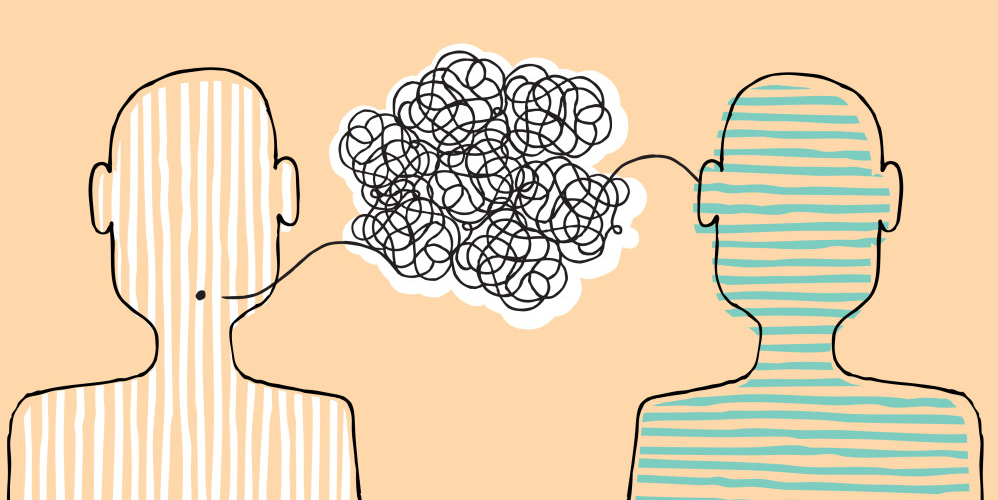The invisible enemy and the language of illness
Earlier this year, as coronavirus began its ‘march’ across the globe and the UK government began to ‘ready defences’ against ‘the invisible enemy’ (or the ‘unexpected and invisible mugger’, depending on your preferred metaphor), one of the things I immediately noticed, as a linguist, was the language being used to discuss the impending pandemic. Discussions of ‘redeployment’ of medical professionals onto the ‘front-lines’, evocations of ‘blitz spirit’, and more ingrained terms such as the upcoming ‘fight’ and ‘battle’ against the illness, have all been abundant in government briefings, press coverage, and WhatsApp chats, conjuring up images of war and calling for national unity in response.
This is not a new idea in linguistics – the metaphor of illness being a form of war is ubiquitous in health discourse and has been extensively covered by others in the field (see, for example, Elena Semino’s work on Metaphor, cancer, and the end of life). These ideas are more prominent than ever in the current climate and the media has been established as playing a central role in how we think about illnesses 1 2, disseminating and reinforcing such images on a daily basis.
However, these symbolic ways of interpreting the world are often so entrenched that we don’t even notice them, and it is rare that we stop to think about the language that we use and the impact it might be having on our world*. Is it helpful to discuss ‘redeployment’ rather than ‘placement’ into different health roles, or might military imagery be anxiety-inducing for the people being unwittingly conscripted into a health service army? Do declarations of ‘war’ against the virus help to instil a sense of gravity, urgency, and a keep-calm-and-carry-on attitude amongst the public, or do they simply lead to war-time levels of panic-buying and loo-roll hoarding?
My own research investigates these types of ideas in illness discourses more generally, as I look into how the UK and US press have covered different physical and mental health conditions over the last few decades. This incorporates many interesting questions: does culture influence how we talk about illnesses in the press, or are illnesses covered in the same way in different regions? Are broader categories of illness, such as mental illnesses or short-term illnesses, treated in a different manner to illnesses outside their category? And crucially, while our understanding of many illnesses has progressed over time, as well as our understanding of stigmas attached to illnesses, has the language we use around these illnesses also changed? Answering these questions will allow me to better understand what ideas we receive, and reproduce, from the media when talking about health, and if there are ways we could be improving the language we use to talk about health and illness.
Research has also shown that the way people think about illness can influence how people with illnesses are treated, or mistreated, by wider society 3, how well people with illness stick to their treatment plans 4, and even how well people cope with and recover from illnesses, such as cancer 5. As such, investigating the language we use, and the ways that this may shape our thinking, may also help us to improve the lives of people with health conditions. Hopefully, when the ‘threat’ of coronavirus has been ‘neutralised’, we will all be a little less familiar with the terms ‘lockdown’, ‘PPE’, ‘socially-distanced’, and ‘zoom’; however, the language used to discuss such illnesses, and the ideas such language imparts, will persist, and critically appraising and refining how we speak about health will continue to be an important process in progressing our society.
*If you’re interested in reading more about language influencing thought, look up the ‘Sapir-Whorf Hypothesis’ or ‘linguistic relativity’ and, if you’re anything like me, prepare to lose hours (or years!) of your life down that rabbit-hole.
References
1. Young M., Norman G., & Humphreys K. 2008. Medicine in the popular press: The influence of the media on perceptions of disease. PLoS One 3 (10). 1-7.
2. Seale C. Health and media: An overview. 2003. Sociology of Health and Illness 25 (6). 513-531.
3. Robinson E., & Henderson C. 2019. Public knowledge, attitudes, social distance and reporting contact with people with mental illness 2009-2017. Psychological Medicine 49 (16). 2717-2726.
4. Im H., & Huh J. 2017. Does Health Information in Mass Media Help or Hurt Patients? Investigation of Potential Negative Influence of Mass Media Health Information on Patients’ Beliefs and Medication Regimen Adherence. Journal of Health Communication 22 (3). 214-222.
5. Richardson E., Schüz N., Sanderson K., Scott J., & Schüz B. 2017. Illness representations, coping, and illness outcomes in people with cancer: a systematic review and meta-analysis. Psychooncology 26 (6). 724-737.
Written by Ewan Hannaford, GTA for LEADS & PhD researcher in English Language & Linguistics


